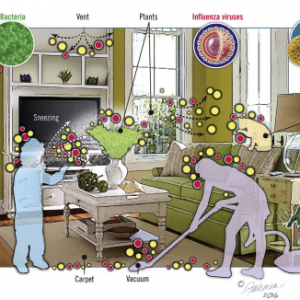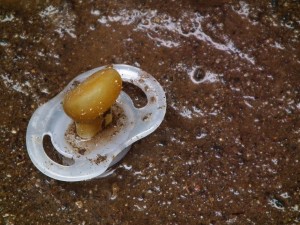By Amanda Makowiecki 1st Year Mechanical Engineering PhD Student Miller Research Group, University of Colorado Boulder Researchers at the University of Oregon recently published a paper examining the connection between architectural design and microbial diversity in our buildings (Kembel et al. 2014). Although occupancy type was identified as the strongest predictor of microbial variation, several …
OK – definitely want this book.
Illustration (from OpenScar.com) an explanation of the beginning of the spread of SARS in Hong Kong’s Amoy Gardens apartment complex where the index case was in a building 60 meters away from a building where about 45% of the 300 infected individuals at Amoy Gardens lived. Many of the other infected individuals also lived in …
You can download the database of over 360 publications that report characteristics of the indoor environment along with the microbes found in the studies. Each publication is entered as a record and includes citation, abstract, keywords, organisms, substrates, and environmental conditions as reported by the authors. The database in MS Access format is searchable for …
Abstracts are sought to address building science issues in the Alfred P. Sloan Foundation’s program, Microbiology of the Built Environment. The Sloan Foundation is sponsoring a symposium as an important part of the conference. The emphasis of the Sloan Symposium will be on the building science aspects of studies of the indoor microbiome — in …
Italian architect Carlo Ratti, Director of the MIT SENSEable Cities Lab, presents an entertaining Ted Talk “Architecture that senses and responds” on the use of sensors in buildings to monitor occupant behavior and environmental conditions for input to the management of the buildings and other human-made systems. Once we know the critical environmental variables that …
After some off-line dialogue related to my “Should you lick your baby’s dropped pacifier?” blog post, I have decided to post a separate comment regarding the hygiene hypothesis, mentioned in the introduction, and the plasticizer hypothesis, emphasized by some off-line correspondents. What is clear is that in the modern, human-occupied indoor environment, there are microbes …




